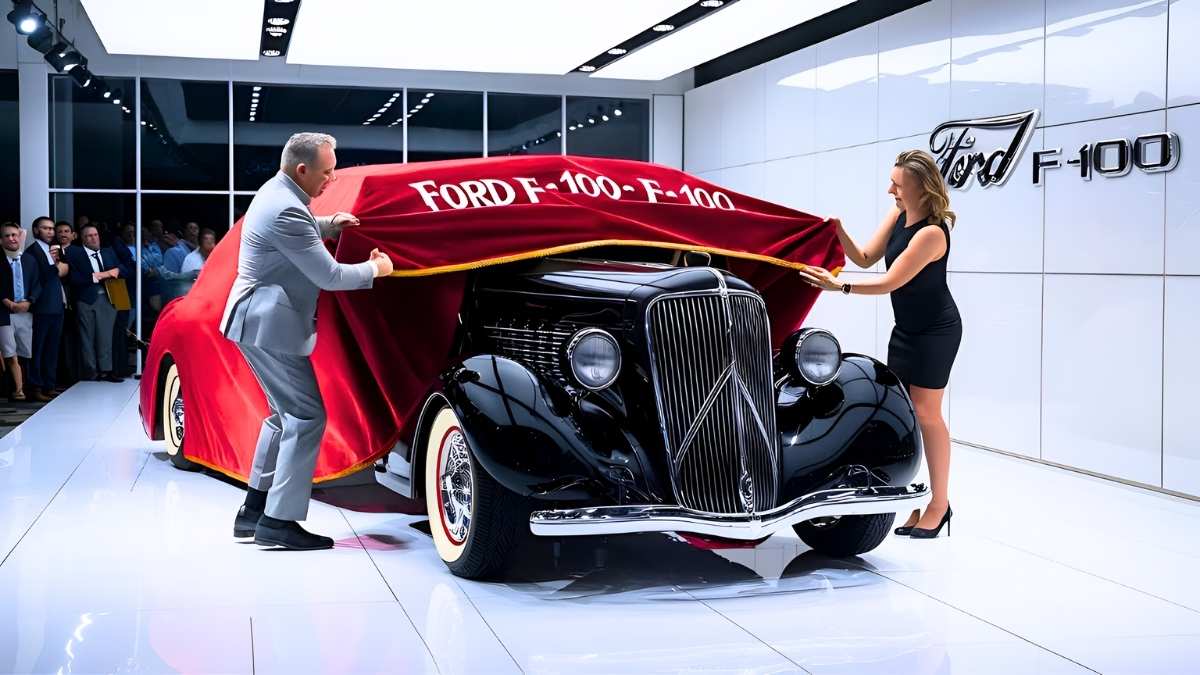The Ford F-100 isn’t just any truck it’s a piece of American automotive history. From rugged workhorse to collectible classic, this pickup has left a lasting mark on the Ford F-Series lineup. If you love trucks, vintage cars, or just good storytelling, the F-100 has a story worth exploring.
What Exactly Is the Ford F-100?
The Ford F-100 is part of the iconic Ford F-Series, which has been in continuous production since 1948. Originally designed as a practical, durable truck for farmers, tradespeople, and everyday drivers, it quickly became a symbol of reliability and style.
With its simple yet strong design, the F-100 bridged the gap between work and lifestyle trucks. It combined a rugged frame with features that made it surprisingly comfortable for daily driving.
When Did the F-100 Make Its Mark?
The F-100 officially debuted in 1953 as part of Ford’s “F-Series” line. It replaced the earlier F-1 series, bringing improved engines, more comfortable interiors, and a sleeker design.
Over the next two decades, the F-100 evolved through multiple generations:
| Generation | Years Produced | Notable Features |
|---|---|---|
| First | 1953–1956 | Redesigned chassis, bigger engines |
| Second | 1957–1960 | Sleeker styling, optional V8 engine |
| Third | 1961–1966 | More cabin space, improved suspension |
| Fourth | 1967–1972 | Stronger frames, modernized interior |
These changes helped the F-100 stay relevant and desirable through the 1970s.
How the Ford F-100 Shaped the F-Series – Explained Simply
The F-100 set the template for future Ford trucks. Its combination of power, durability, and comfort influenced the design of later F-Series pickups, including the famous F-150.
Key contributions include:
- Balanced payload and towing capacity – making it practical for work and leisure
- Cabin comfort innovations – foreshadowing today’s modern truck interiors
- Style cues – simple but bold lines that made it instantly recognizable
In many ways, every modern F-Series truck carries a bit of the F-100’s DNA.
What They Are: Popular Versions and Collectible Models
Over its production years, some F-100 models have become highly collectible. Popular trims include:
- 1956 F-100 “Step-Side” – known for its stylish rear fenders
- 1966 F-100 Ranger – one of the first trims to focus on comfort
- 1972 F-100 Custom – last generation before the F-100 nameplate was replaced by the F-150
Restored models can fetch anywhere from $20,000 to over $60,000, depending on condition and originality.
Best Tips for Classic Truck Enthusiasts
If you’re thinking about owning or restoring an F-100:
- Check the chassis and frame for rust – many older trucks have corrosion issues.
- Research engine options – early V8s are more collectible, but inline-six engines are easier to maintain.
- Preserve originality – classic value is higher when original parts are maintained.
- Join local F-100 clubs – they’re great for sourcing parts and advice.
Why the F-100 Still Matters Today
Even decades after its debut, the F-100 remains influential. It helped establish the Ford F-Series as America’s best-selling pickup line, shaping the expectations for what a pickup should deliver: toughness, versatility, and even a touch of style.
Conclusion
The Ford F-100 isn’t just a vintage truck it’s a cornerstone of pickup history. Its impact on the F-Series lineup, its blend of durability and comfort, and its iconic style make it a beloved classic. Whether you’re a collector, a Ford enthusiast, or just curious about automotive history, the F-100’s story is worth knowing.
FAQ
When was the first Ford F-100 produced?
The F-100 debuted in 1953 as part of Ford’s F-Series trucks.
What made the F-100 so influential?
It combined durability, comfort, and style, setting the standard for future F-Series pickups.
Why are some F-100 models highly collectible?
Models like the Step-Side 1956 and Ranger 1966 are rare, historically significant, and well-preserved.
How much can a restored F-100 cost today?
Depending on condition, prices range from $20,000 to over $60,000.
Can the F-100 still be used as a daily driver?
Yes, with proper restoration and maintenance, many F-100s are reliable for modern roads.



